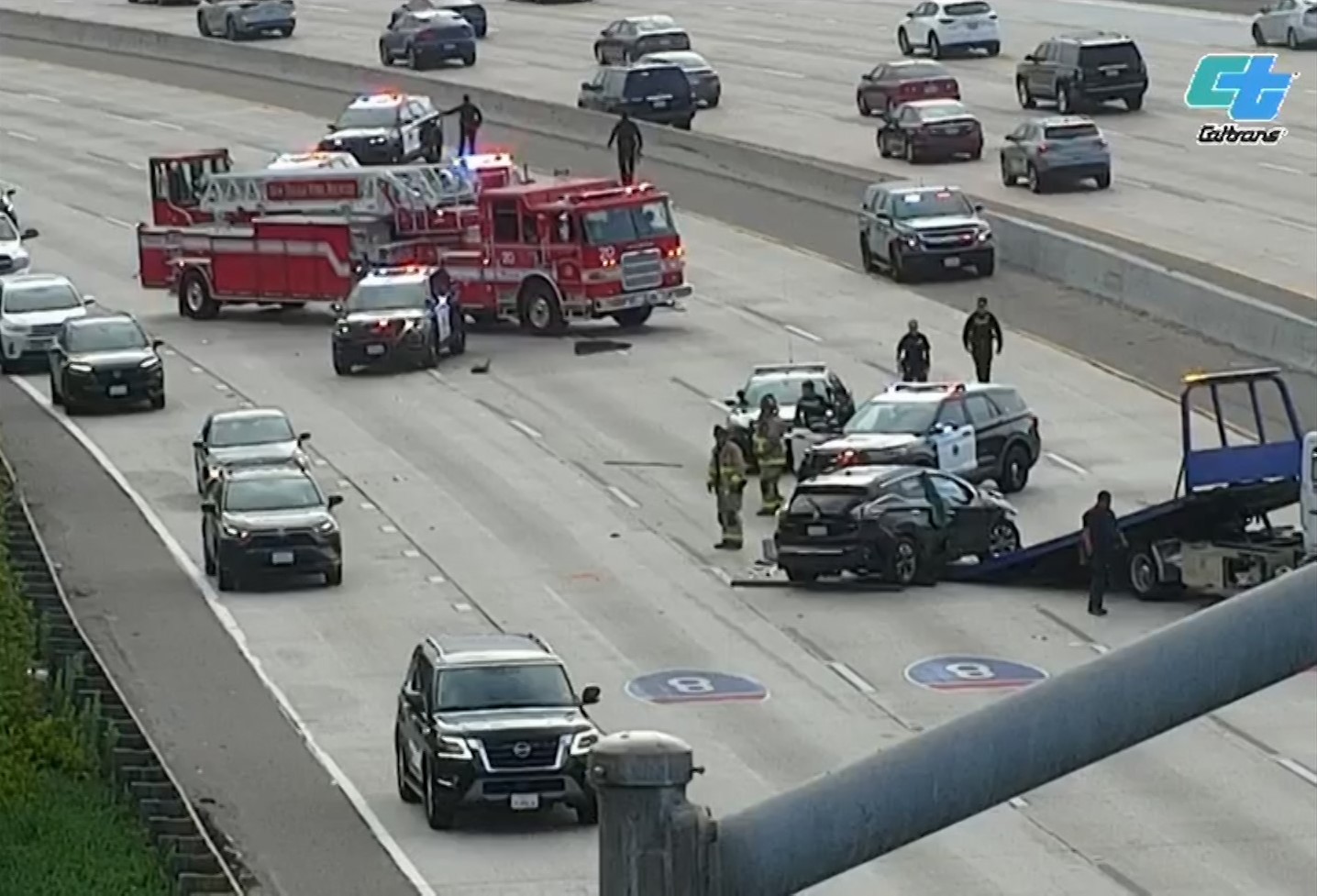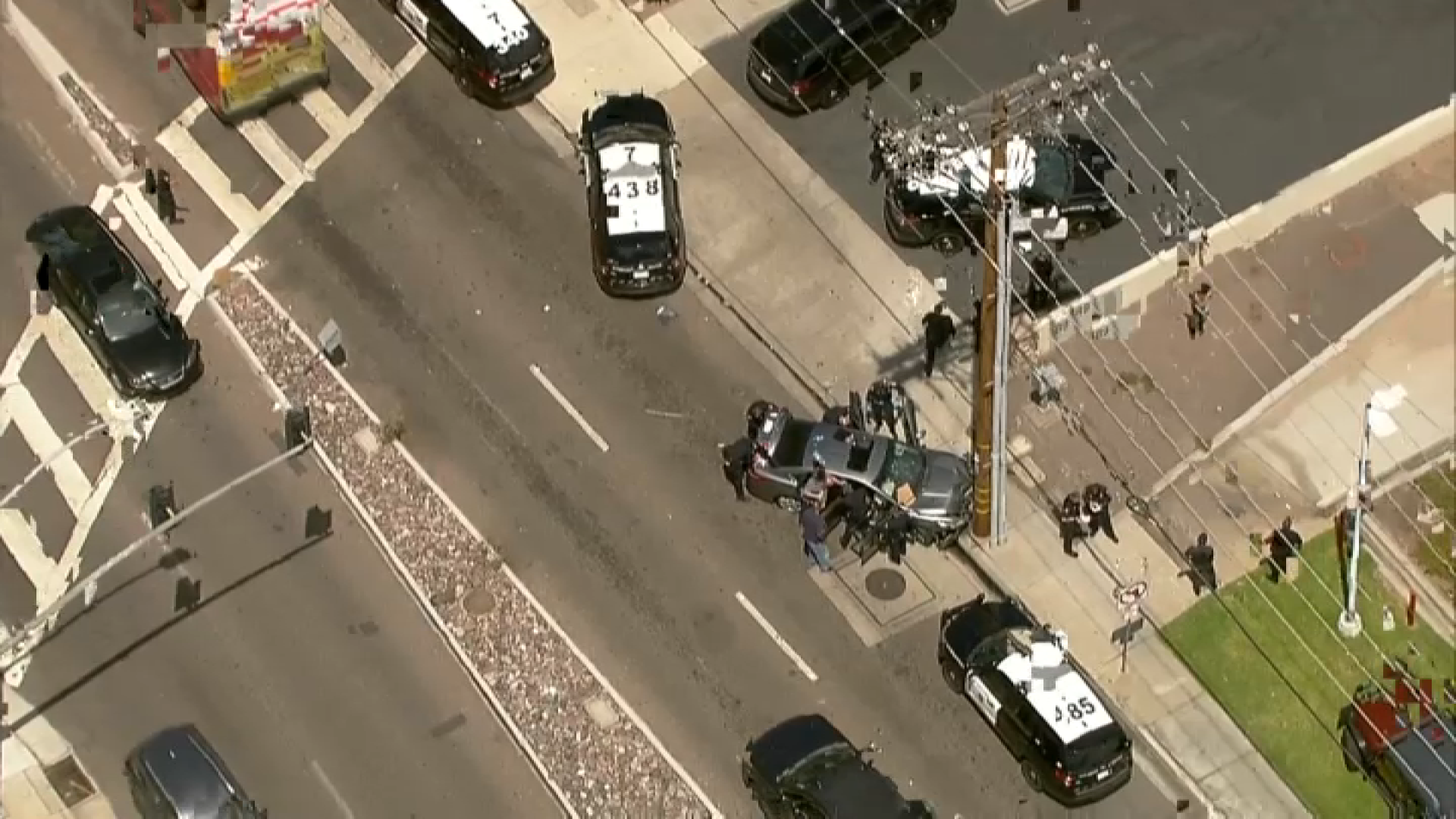An oversight commission wanted to restrict what suspected crimes warrant initiating a police pursuit, reports NBC 7’s Shandel Menezes.
There won’t be any major changes to how San Diego police officers pursue drivers who refuse to pull over, despite the city’s Commission on Police Practices push for changes to that policy in the wake of several high-profile deadly crashes.
Those include the deaths of two child bystanders in December 2023 and the death of one of its own officers last August.

Perhaps the most substantial of the commission’s recommendations was to eliminate pursuits over low-level offenses like traffic infractions, property crimes and misdemeanors.
Get top local stories in San Diego delivered to you every morning. Sign up for NBC San Diego's News Headlines newsletter.
During a news conference Friday afternoon, Chief Scott Wahl said his department reviewed the recommendations carefully. Although he said safety is his department’s priority, he didn’t agree with restricting pursuits based on the crimes.
“We think that that sends the wrong message: that fleeing from the police has no consequences,” Wahl said.
Wahl echoed that sentiment in a memo to the commission, writing, “These risks include increased reckless and dangerous driving being allowed without police intervention, and fleeing from illegal acts that threaten public safety without fear of being identified and held accountable for criminal violations.”

Wahl also made the argument that it would embolden lawbreakers. He said cities that implemented similar policies had seen a rise in crime rates. NBC 7 has not independently verified that claim.
Another recommendation from the commission that was rejected would have required officers to pull their vehicles over if they decided to abort pursuits. Their reasoning was that suspects would slow down if they understood they were no longer being chased.
Wahl wrote that the department would update policies to require officers to turn off their lights and sirens and announce over police radios that the chase was stopped. However, he disagreed with requiring them to pull over, saying that could create more danger on the roads.
SDPD also told the commission it wouldn’t try to get law enforcement accreditation from a group called the Commission on Accreditation for Law Enforcement Agencies. Wahl said that would have required money and staffing time the department didn’t want to allocate.
The commission also wanted SDPD to establish a Vehicle Pursuit Review Board to look over chases to ensure policies were being followed and to identify trends to improve public safety.
In his memo, Wahl said the department would be open to that and would be working with the San Diego City Attorney’s Office.
“I think this is an ongoing dialogue where we are continuously looking to seek improvements, find ways that we can provide for higher public safety and, obviously, have less casualties and injuries,” Wahl said.
Of the six recommendations the department did partially agree to, two include changing some wording in its pursuit policies. Neither would have much of an impact on how pursuits are conducted.
“What they are talking about is grammatical changes and not actual pursuit changes,” community advocate Tasha Williamson said.
Williamson has been vocal about many SDPD policies and incidents, including police pursuits. She told NBC 7 she wasn’t satisfied with the department’s responses to the commission’s recommendations.
“We are concerned with the zealousness of officers who have to get the suspect at all costs," Williamson said. “And this has cost not only the lives of the public, but also the lives, and injuries of officers.”
You can read SDPD’s full response to all the recommendations here.
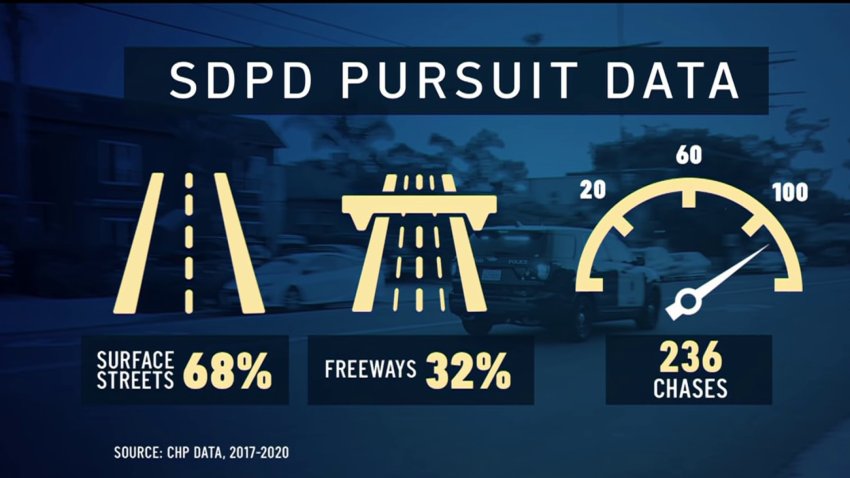
Pursuit data reveals more chases and crashes for SDPD than most agencies
The NBC 7 Investigates team has been analyzing police chases in California for more than a year. Every time a police agency decides to pursue a suspect, officers have to report the chase and relevant details to the California Highway Patrol, including maximum speeds, whether there was a crash, etc.

NBC 7 Investigates went through every one of these forms that the San Diego Police Department completed over the past several years. We also analyzed a CHP spreadsheet with data from each law enforcement agency in the state to see how SDPD stacked up.
While some pursuits involved multiple agencies, we specifically narrowed our analysis to pursuits that were initiated and terminated by the same agency.
Between 2017-23, SDPD engaged in 1,592 of those pursuits. That number put it in fourth place for the police agencies that reported the most car chases in California. It was only topped by the Los Angeles Police Department, the Los Angeles County Sheriff’s Department and the San Bernardino County Sheriff’s Department.
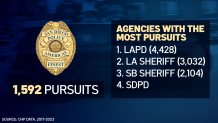
One of the most revealing statistics is how law enforcement agencies justified why pursuits were started. A few agencies have policies that don’t allow officers to chase suspects over low-level offenses, instead choosing to focus on violent crimes and felonies.
San Diego Police is not one of them.
We discovered that 62% of SDPD pursuits started over a traffic infraction and 10% over a misdemeanor. Only about 21% were due to felonies. Those metrics were substantially different than the California state average, which saw a little less than half of chases begin over an infraction.
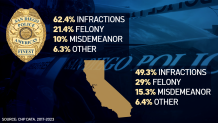
San Diego police were also more likely than the average California police agency to have a car chase end in a crash: 17% of SDPD’s pursuits ended with some kind of collision. That amounted to 257 crashes out of its 1,592 chases. That collision rate was higher than the state average of 13.7% or the San Diego County Sheriff’s Office average of 15.2%.
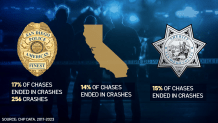
SDPD reported 425 instances where a chase resulted in property damage, 171 injuries and four people who died, over a seven-year period (2017-23).
The data also revealed what kinds of roads these pursuits played out on. More than double of SDPD’s car chases took place on surface streets compared to the freeway. For more than 236 chases, officers reported reaching speeds over 100 mph.
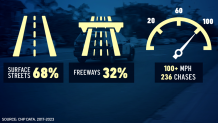
You can read the commission’s recommendations below.

